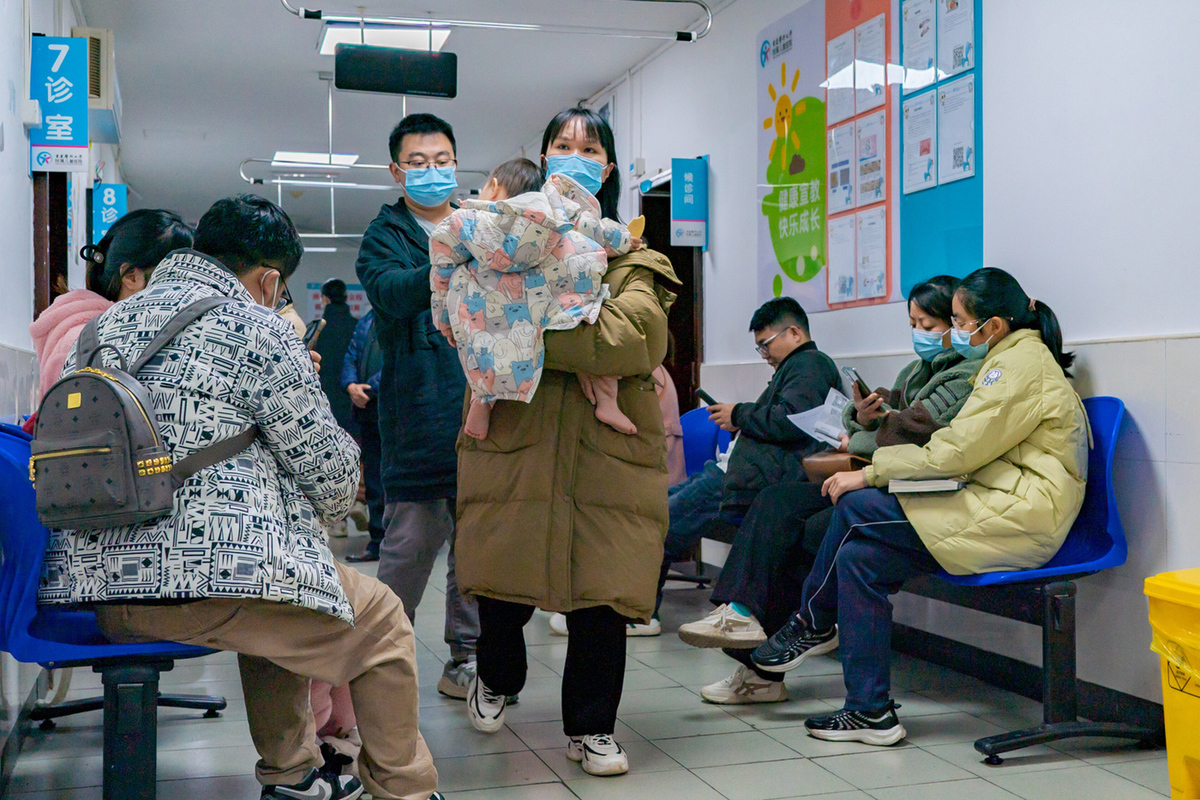“Unusual bacteria”: microbiologist Yakutenko named the danger of mycoplasma pneumonia in children
[ad_1]

Judging by reports, the epidemic of mycoplasma pneumonia, which first covered China, then Indonesia, and then spread to some European countries, has reached Russia. Experts from Moscow and St. Petersburg report an alarming increase in incidence. Officially, the authorities reassure that there is no cause for alarm, but doctors say that some children’s hospitals are already filled to capacity, and antibiotics have begun to cope poorly with mycoplasma.
How the disease manifests itself, why it is dangerous and whether it can cause a new pandemic – in the material “MK”.
Children’s infectious disease specialists told the media that the increase in the incidence of mycoplasma pneumonia, as well as coronavirus infection and influenza among Moscow children, sharply increased about a week ago. Experts are seeing a lot of positive tests for Covid and mycoplasma pneumonia. Otitis and sinusitis develop as complications in children.
Since it has gotten colder outside, it has become difficult to ventilate rooms in children’s institutions, and stagnant air contributes to the rapid spread of infections (all of the above are transmitted by airborne droplets). Some classes have already begun to go into quarantine.
In the northern capital, an extraordinary increase in mycoplasma pneumonia in children is also recorded: according to expert estimates, such complications are observed in almost every second child who has had an acute respiratory viral infection – this was reported by the chief pediatric infectious disease specialist of St. Petersburg, Elena Dondurei.
According to her, today at Children’s Clinical Hospital No. 5 named after. Filatova in St. Petersburg, every third patient is hospitalized for mycoplasma pneumonia. “We are noticing an extraordinary rise in mycoplasma infection – we have not seen this, probably for many years. Every second or third patient with ARVI in the hospital has pneumonia, and in 50-80% of cases it is mycoplasma pneumonia,” said Elena Dondurei.
Is the world on the verge of another pandemic? According to the famous microbiologist Irina Yakutenko, there is no need to be nervous about this particular outbreak: “We are seeing an unprecedented increase in the incidence and hospitalization of children with respiratory infections. These infections are called colds in everyday life, but sometimes they lead to a severe course.
The vast majority of colds are caused by viruses, but one pathogen that produces typical cold symptoms is a bacterium, Mycoplasma pneumoniae. During cold seasons, some diseases are always associated with it, but every few years mycoplasma infections increase. Obviously, this is just such a year.
In addition, its increased spread may be due to the fact that in China, in principle, there is an increase in respiratory infections due to the lifting of covid restrictions. Infection with M. pneumoniae usually causes mild symptoms, but in young children who do not yet have immunity to it, it can be severe or fatal and require hospitalization. When there are many sick people, there will be many children with severe disease.”
It is almost impossible even for a specialist to distinguish Covid from mycoplasma pneumonia by clinical manifestations. However, today there are rapid tests for all these infections.
If we talk about mycoplasma pneumonia, most children tolerate it easily. It begins with weakness, increased fatigue, sore throat and nasal congestion. At the first stages, the temperature may be low, but after 3-4 days a strong fever (above 40C) may begin. Most often, pneumonia is accompanied by shortness of breath and low saturation. However, if the lung damage is caused by covid, the diagnosis of choice is CT, while bacterial pneumonia is shown by x-ray.
Mycoplasma pneumonia is treated with antibacterial agents. Until now, drugs from the macrolide group have worked against it, but after the coronavirus pandemic, their resistance to bacteria has increased many times – and they have practically stopped working. Therefore, doctors have to use tetracycline or fluoroquinolones, which often cause side effects in children. In addition, these drugs are less effective, so treatment takes a long time.
Irina Yakutenko reminds that mycoplasma is an unusual bacterium: “It does not have a cell wall typical of bacteria, and many popular antibiotics target it exactly. That is, our arsenal of the fight against M. pneumoniae is initially limited.
Every year, an increasing proportion of mycoplasmas become resistant to macrolides. In China, the percentage of resistance reaches 100%, in Europe the situation is better, but gradually the proportion of resistant strains is growing here too.
We have very little data for Russia – it seems that in the European part there is still little stability, but in the east, in the Khabarovsk Territory and other regions neighboring China there is a decent amount. There are no quick tests, firstly, for mycoplasma, and secondly, for resistance, so doctors often do not prescribe antibiotics for a long time, and when they decide that it is mycoplasma, they prescribe macrolides, which may be useless if the child is infected resistant strain. Accordingly, the child’s condition worsens, and he has to be treated with antibiotics that are less favorable in terms of consequences.”
How to protect yourself from mycoplasma pneumonia and protect your child? The measures here are known to everyone and are as simple as possible: wash your hands more often, ventilate the premises, wear medical masks in crowded places, wash your nose and throat every 4 hours (for children after school). At the first symptoms of a cold, stay home. In addition, doctors advise avoiding attending public events and crowded places.
[ad_2]
Source link








